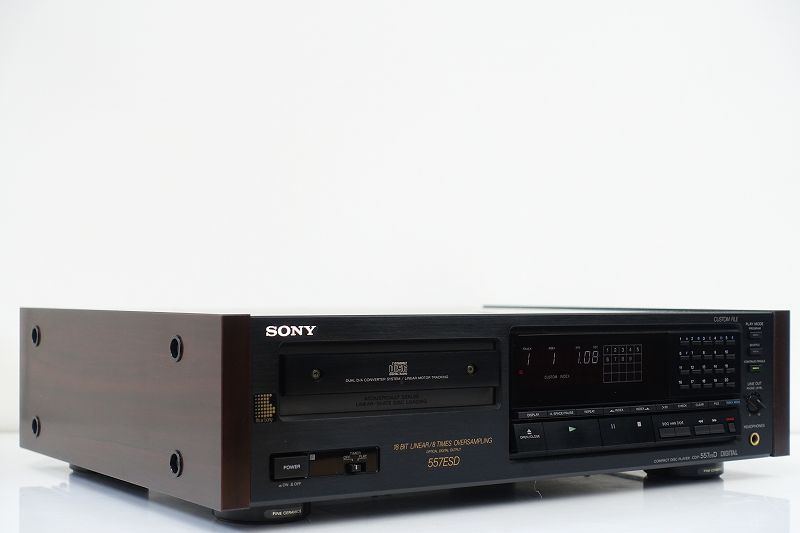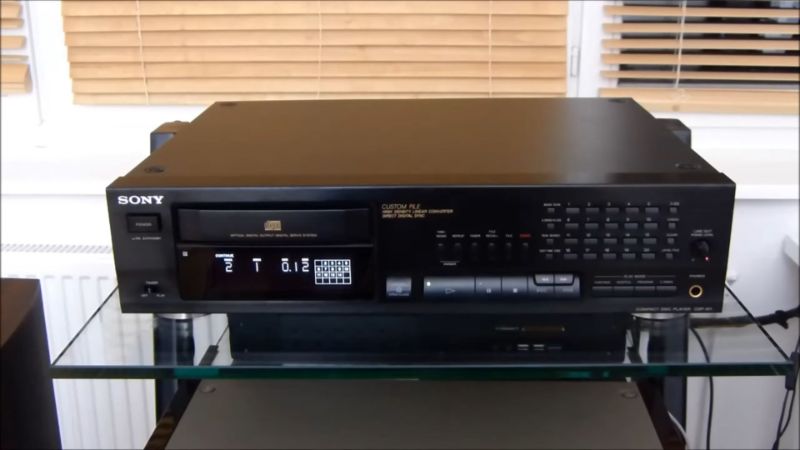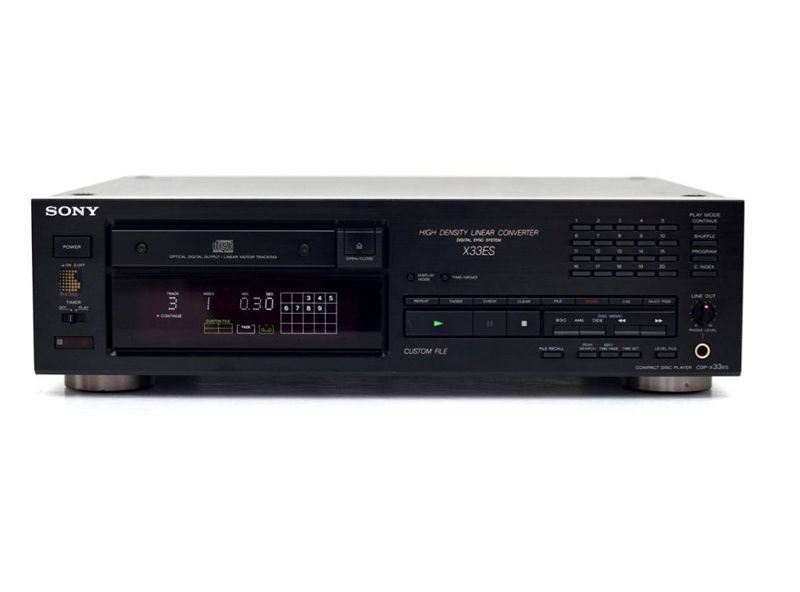A long, long time ago, in a galaxy far, far away… a firm called Marantz released the CD43, CD53, and CD63 line of CD players. They were arguably the best available at their respective price points at the time, or at least among the best available. And they enjoyed long and happy lives, spawning models like as the 67, 67 MkII, and 67 KI Signature. However, in their evolution, they overestimated the competition, which was hard at work, and eventually caught up to Marantz.
Marantz was not quite as popular in early 1999 as it had been a few years before. During that period, Marantz engineers were hard at work developing a truly unique product, not just a development of a well-known series. And their work was not easy: they had to follow up on a legend, which is never easy, as well as once again offer something the competitors couldn’t at a particular price range. What Marantz has to say about CD sound today is the new Millennium series, which consists of five models.
To the best of my knowledge, the first two versions, 4000 and 5000, are repackaged Philips models 723 and 753; I could be wrong about the repackaging, but I know I’m correct about the sound because they sound almost identical to their Philips counterparts. They use the same mode of transport throughout the line, the Philips VAM1201, which Philips claims solves major issues from the past. The lower versions use SAA7378 decoders, the TDA1545 DAC in the 4000, the TDA1549 DAC in the 5000, and two SM5872BS DACs in a differential configuration in the 6000 and 6000OSE. Both versions 6000 keep Marantz’s heritage of having separate active low pass filter (LPF) and specialized output stages, but there are some changes here as well.
Model 6000 uses the well-known and traditional to Marantz op amp, NJM2114D, for the LPF filter stage and Marantz’s proprietary HDAM discrete modules for the output stage, whereas model 6000OSE replaces the NJM op amp with another pair of HDAM discrete modules, uses better quality caps, better transformer, and so on, for a price premium of 23% over model 6000. On the question of internal electronics, I noted that Marantz now employs more stable lines with full electronic regulation than previously, and that the power transformer has grown significantly.
Although a larger transformer does not always imply a higher proportional power yield, it must be higher than with a smaller transformer. This is quite nice, as one of the older series’ standard changes was to replace the transformer with a bigger and better one; I’m not saying this isn’t still an option, but it’s clearly less so than before. The insides are still spotless, as Marantz has always been known for, with the only major difference now being that instead of everything being on one plane, a smaller board is piggybacked to the motherboard. I also notice that there are facilities for extra piggyback boards, though I’m not sure what they are.
The NJM2114D chips are still ordinary 8pin DIL chips, so users can swap them out for stronger op amps. The HDAM modules, on the other hand, are firmly fastened in place, so forget about them; they’re there and that’s it. There are some helpful tweaks on the back of the case as well. Another welcome upgrade is the gold plating of the RCA Cinch connectors (albeit they are still of commercial quality).
Also, the back of the case is now perforated along the upper edge; if you think this isn’t a huge concern, put your hand there after an hour or so of work and you’ll be able to feel the warm air leaving. Instead than depending on the metal heat transfer qualities of their cases, I hope others will do the same.
Last but not least, there’s the phone. Older Marantz CD players had quite large remote controls that, although practical, were also cluttered with a variety of buttons; this is not the case here. The new RC6000CD remote control set looks remarkably identical to its Philips TV set counterparts, has fewer buttons than before, but most essential commands are there. This includes the volume command, which is only available from the remote control set, so if you plug a pair of headphones into the provided 6,3 mm connector, the remote is the only means to manage volume.
If you’re used to Marantz’s older series models, notably the model 67 KI Signature, the Marantz will surprise you at low settings. If you have one of the regular products in this price range, it will also surprise you. The 6000 maintains complete control over the music it plays, which has always been regarded as one of Marantz’s finest features.
The price you paid for this in the previous series was a distinct lack of dynamics, and it was possible to catch the old models out with some really fast electronic music by Vangelis and Enigma, leaving them gasping for air. That is not the case here. The 6000 is far faster than its predecessors, and the dynamics that were lacking back then are now present and correct. This machine is fast and he’s going someplace, so you’re not going to have him panting for current or air. This payer now has a vitality about him, a joy of life that he before lacked. In fact, if you ask me, it sounds better than the old 67 KI Signature.
The precision that has always been a trademark of Marantz has been preserved, if not improved upon. It’s still an exceptionally precise player (for the price), but there’s more cohesion than before, as though the music is more in focus than previously. And there’s a sensation of warmth, which isn’t artificial; it doesn’t obscure the music, and it might not be warmth at all, but rather a calm feeling. The player simply turns off the music and attempts to fade out of view – it can’t compete with the much more costly models, but in so far as it goes, it walks confidently and confidently, always knowing exactly what it’s doing.
Let me not forget to mention that the mechanism is extraordinarily quiet when in use. I’ve heard even more whispers, but at prices that aren’t discussed in polite company.
I always let Billy Idol take the lead while trying this. That’s because his music is designed to be played loudly; it doesn’t work well when played quietly. Boris and Dieter, also known as Yello, are in the same boat. Also, these guys have a lot of bass lines, many of which are synthesized sounds, which tends to highlight any flaws in that aspect.
For a budget player, the Model 6000 has an amazing bass department; to be honest, its bass lines are better than those of some much more costly players. To begin with, its bass is rich and deep, unlike many budget players, which have a thin and fake bass. It’s also warm, rather than chilly and false.
I’m happy to report that this does not come at an additional expense, and there is no common trade-off in the midrange and treble. The quality of the treble of the Model 6000 is likewise above average for its class, although not as stunning as the bass lines. Treble is clear, and there is no weariness even after 10-12 hours of playing. Nonetheless, while it’s up there with the finest for the money, it’s not what I’d really like – I know I’m also recommending a more costly player here, but I can’t help myself.
One of this player’s best qualities. The soundstage is basically as big as the recording allows it to be. The soundstage will be wide and deep, in other words, quite 3-dimensional, if the recording is decent. And, once again, I can’t recall the last time I heard a soundstage as outstanding as this on a device in this price bracket; you’ll have to pay more for better.
I brought this up as a special item because I enjoy tweaking and can’t seem to stop myself from doing so. This model was no exception; however, because it was on loan to me, I couldn’t merely replace the capacitors and op amps to see what I’d get. So I went with SoundCare spiked feet, my favorite add-on (see test on our site).
Because the original CD player feet are secured with screws, it was simple to remove them and replace them with Soundcare spikes. I did it because I’ve seen what they can do for turntables, CD players, and other audio equipment. And, sure enough, the extra investment resulted in a major clean-up of what was already a rather clean player. True, the bass was less powerful, but it was also better controlled and cleaner.
The treble and midrange also improved, but the soundstage was by far the most improved. Again, it was nice to begin with, and SoundCare only improved it, so it went from good to excellent. Given the combined price of the two, I should probably say impressive, but I won’t since I want to try out the 6000OSE version first, as it may turn out to deliver a still better final result, and the price difference isn’t all that large, around +23-24% over the basic model. However, following installation, the music was a delight to hear. That’s what I’m saying.
Is it flawless? Obviously not. This is an obviously excellent product for the price, much like the original CD53 and CD63 were when they were first released – believe it or not, Marantz has done it again. But it isn’t ideal. Let me add that I can’t help but compare it to my two trusted players, the Harman/Kardon CD730 and the Philips CD721, which I modified. The H/K also has a completely discrete, fully complementary, twin differential output stage, similar to Marantz’s 6000OSE model, which uses two essentially identical modules for I-V conversion, LPF filtering, and output proper. The H/K, on the other hand, is a straightforward 1-bit model with no frills. It also cost 31.5 percent more than the model 6000 under consideration.
In terms of overall sound balance, the H/K outperformed the Marantz, sounding both more coherent and authoritative on the bass, and tying up any loose ends. I’d say they were about even in terms of soundstage. The H/K, on the other hand, sounded only a smidgeon more lively than the Marantz, hardly perceptible but audible.
The Philips struggled to compete with the Marantz. Sure, the Philips now boasts three power transformers, more regulated supply lines, and a very quick output stage, but all of this has pushed its price up to the same level as the Marantz. The Philips could be somewhat superior in terms of overall clarity and coherence, but it couldn’t catch up with the Marantz in terms of soundstage. The Model 6000 was simply superior at it, and that was the end of it. On balance, I’d rather have the Model 6000 now than the Philips 721.
If you’re looking for a high-quality CD player at a fair price, you won’t find much better, if any, elsewhere. Second, if you buy anything in this price range without consulting this model, you will be making a huge error. You may decide to buy something else in the end, but at the very least, give it a run for its money, make it sweat and pant.






